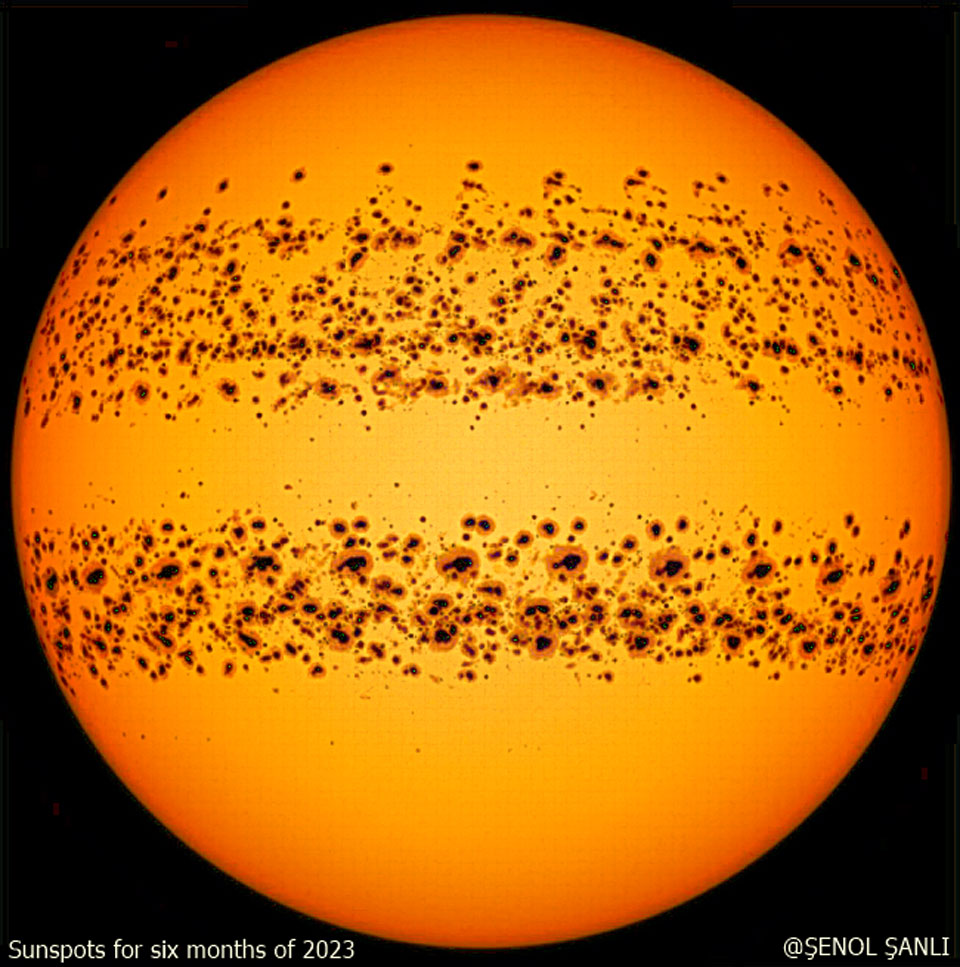Wow this is really neat, I didn't realize sun spots occur in bands like this. I always assumed they occur across the whole surface
SpacePics
A community dedicated to sharing high quality images of space and the cosmos
Rules:
-
Include some context in the title (such as the name of the astronomical object or location where it was photographed)
-
Only images, pictures, collages, albums, and gifs are allowed. Please link images from high quality sources (Imgur, NASA, ESA, Flickr, 500px , etc.) Videos, interactive images/websites, memes, and articles are not allowed
-
Only submit images related to space. This may include pictures of space, artwork of space, photoshopped images of space, simulations, artist's depictions, satellite images of Earth, or other related images
-
Be civil to one another
They don't, they're the same spots overlayed over time. What you're seeing is each spots parambulation around the sun which makes a banding pattern when all together, think of it like each spots orbit.
That largest one in the Southern hemisphere is visible—with proper protective gear—to the naked eye, designated No 3363.
It’s approximately six Earths across.
Really? I wasn't aware of that, super cool.
Yes! I didn’t know it was possible. I was on a sunrise walk a few days ago and the sun was coming through a thick haze and I could make out an object in the way of the sun. I thought it might be an airplane or a satellite, but it never moved. Then I thought it might be the planet Mercury, but when I looked it up, it was in the wrong place. Then I found a NASA sunspot tracker, and there it was.
What exactly is a sunspot? I always assumed same thing as cme without ever looking into it. Sounds like there is a difference?
Love the picture btw!
Gotta admit I'm more concerned to learn what solar maximum is
Slightly anticlimactic, with some chance of cataclysm
No biggie if that chance happen we get to see auroras everywhere perhaps our lights won't need to be plugged. Apparently the biggest one were able to power telegraph without battery with how efficient light bulbs today it might be enough to power it until it burns out. If it happens everyone will be force to touch grass whether they like it or not.
It's just an are that is cooler than the surrounding plasma. Formed through changes in the magnetic field. Here's a cool article.
and fun fact, apparently they only look that dark in relation to the rest of the sun; they'd be a glowing orange-ish color if isolated
Oh yeah definitely still glowing hot at over 6,000F.
Looks like Granny made a cute Christmas sweater for the Sun.
Looks like the sun is playing the game of life
space is so awesome!! truthfully, i wasn't even aware of sun spots!
